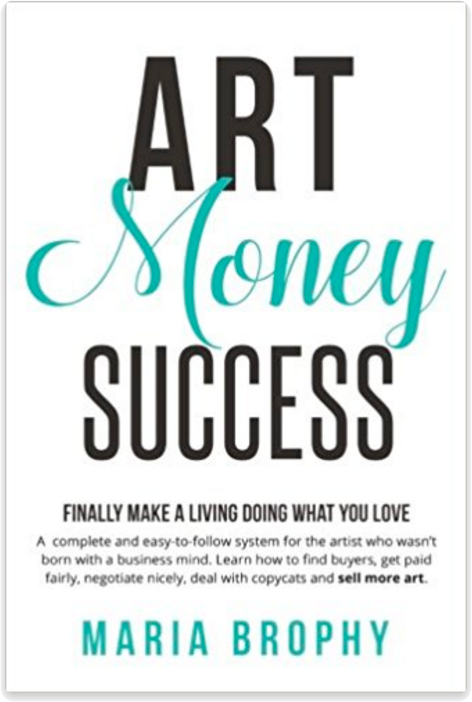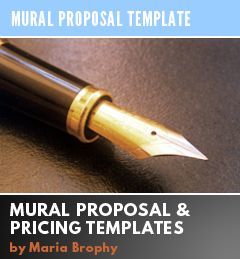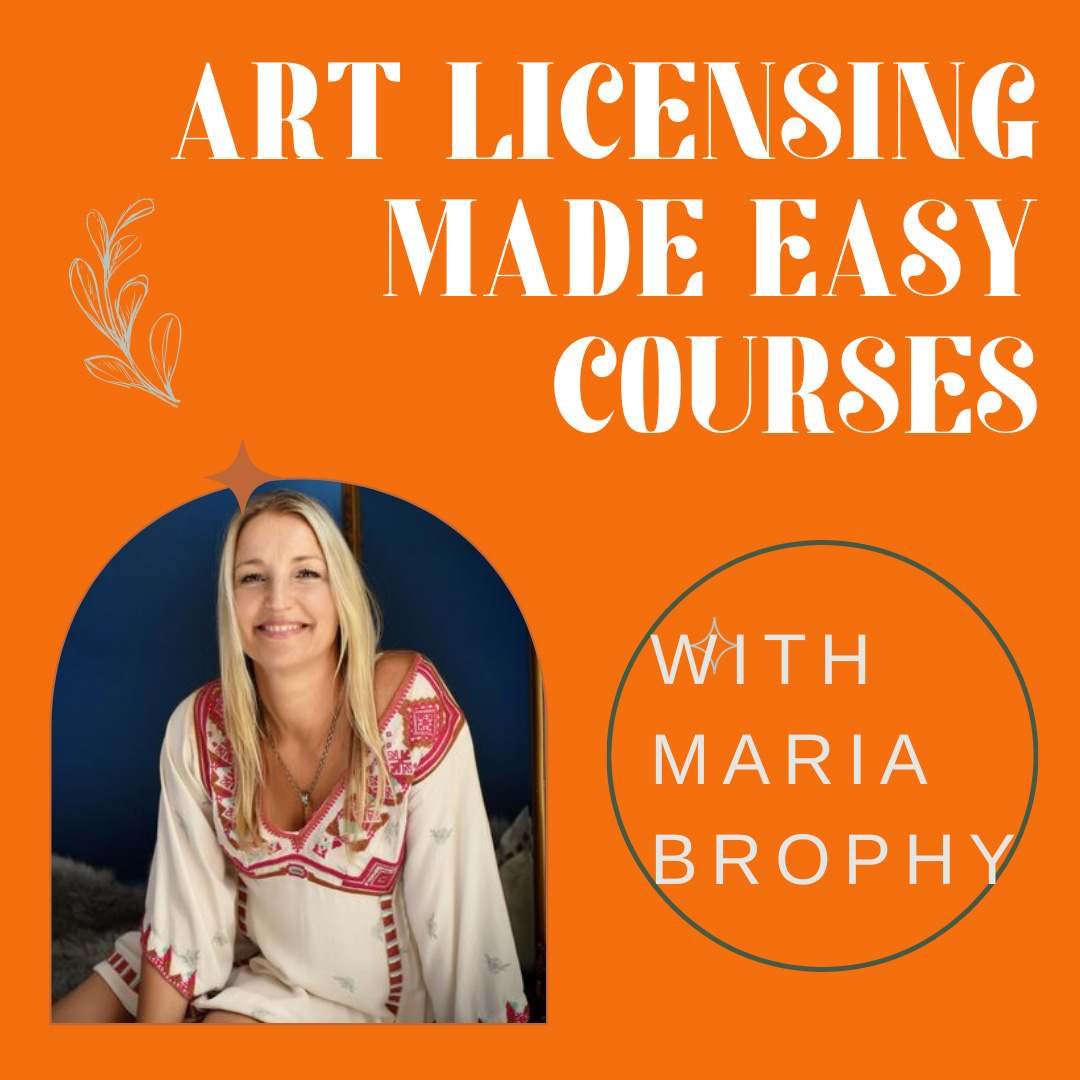
An Emergency E-mail arrived and I know that a lot of artists find themselves in this position at sometime or another:
“I found your blog a month ago and have been reading it religiously. You give such great information! But now I have an EMERGENCY:
I have a friend that has created some characters. She had an interview at a collectible/toy company. She showed her characters and they loved them and want to sell them.
The problem is my friend doesn’t have a head for business. The company wants to pay her a flat fee for a line of these characters. I’m not even sure if they’ve talked about her retaining the rights to her work. This company licenses many other big name properties like Star Wars and Avatar.”
First things first: The company doesn’t decide how it’s going to work with your copyrights. The artist does. In a licensing deal, the artist ALWAYS retains rights to the copyrights.
And in my personal opinion, an artist should NEVER, EVER, EVER sign away their copyrights. NEVER.
But that’s another blog post. I’ll stay focused on the immediate need here.
It’s good news that the company is accustomed to licensing from other entities. This means that they understand how licensing works. Companies that understand how licensing works are easier to deal with, because they know that they are expected to pay an advance up front, royalties later, and that the artist retains all rights. This is good.
Here’s what your friend needs to do, in this order.
Forget that you don’t have a business head. It doesn’t matter. There are certain ways that things are done, and all you have to do is follow the steps. I’m giving the steps below. If you follow them, you’ll do just fine on your own, business head or not.
Educate yourself on how licensing works. I recommend the book called Licensing Art & Design which is listed here on one of my posts: https://mariabrophy.com/business-of-art/five-must-read-books-for-artists-looking-to-uplevel-their-career.html
Order that book immediately and start reading. You can also read some tips on licensing that I’ve written:
LICENSING YOUR ART TO A SKATEBOARD CO. OR ANY COMPANY
WORK SMARTER NOT HARDER – LICENSING 101
FILE YOUR COPYRIGHTS: Be sure that you have filed copyrights. TODAY. It’s your duty to yourself and your licensees to have all of your works copyrighted. Do that right away, if not already done. You can go to www.copyright.gov. It’s cheap and it’s easy. Just follow the directions.
DEALING WITH THE COMPANY (LICENSEE): First, ask the company the following:
- How many of the Licensed Articles (the product) do they plan to produce? (They should have a ballpark idea of how many they’ll produce)
- Where will they plan to sell them?
- What will be the retail price and the wholesale price?
- Ask them to submit a deal memo, which will detail the advance and royalties that they propose to pay, and for how many years they are asking for the license, etc.
In the licensing world, Deal Memos are always used in the beginning of a licensing discussion. It’s what you use to make sure that you are all on the same page before you go to the contract phase of the deal.
Review their deal memo and see what you agree to and what you don’t agree to. And then e-mail them back letting them know what changes you’d like to make to the deal. There will be a little going back and forth, which is completely common.
IF THEY WANT TO PAY A FLAT FEE: If they are offering a one-time fee that you are happy with, that’s okay too. But they should pay the fee up front, not later. Also, be sure that your licensing agreement states the number of years that they are allowed to produce it, and that you retain all rights. There are about 50 other little details that the agreement should touch on, and a good art licensing attorney will help you with that.
IMPORTANT: If it’s a royalty arrangement, always get an advance of royalties up front. The amount varies depending on how many of the product will be produced. We always ask for a minimum of $5,000, which is payable at signing. This way, our attorneys’ fees are covered as well as our time.
NOTE: It’s also vital to have an agreement in place BEFORE giving over any artwork. Even for sampling. Don’t give any artwork until you have a written agreement.
Once you agree on the deal, have an attorney put together a license agreement for you. I use an attorney that specializes in Art Licensing.
DO NOT USE A GENERAL ATTORNEY. Or your uncle Joe who does divorces. Art licensing is very specific, and general attorneys know NOTHING about it. Trust me on this.
One of the biggest mistakes artists make is the reluctance to pay for an attorney. It’s vital to have representation. I don’t care if you can’t afford it. Borrow the money. Otherwise, you’ll be whining later that you got screwed over or that things didn’t go the way you thought it would. And I won’t feel sorry for you. If you’re not willing to play the game right, then go get a job where you’re safe and don’t have to take any risks. (Drives me insane to hear people complain that they got into a bad deal, then to admit they didn’t use an attorney.)
Once your license agreement is drawn up, send it to the company. They may make changes to it, and if so, you’ll have to have your attorney go over their changes and let you know if they recommend your agreement.
Sometimes you’ll get lucky and a licensee won’t make any changes, they’ll just sign it. I love when that happens!
Be sure to include in your agreement that you get a dozen samples of each Licensed Article. Also be sure to require your name and/or logo or signature (whatever you use to identify yourself) is marked clearly on the Licensed Articles.
And be sure to write into me any other questions that you have!
Happy Licensing – Maria xxoo










32 Responses
Great read. I gotta get that book, Licensing Art & Design.
This is very good stuff. I will learn as much… or more, from you as I did from Drew. I need “Licensing 101”
Good article María. As usual, a pearl of wisdom. Now, if I could only get my characters licensed!
Well, Danny, you probably could. Just keep working on it!
Good Evening Maria,
That was some of the best advice I have come across in terms of art licensing. I have stepped away from the studio for awhile to focus more on networking my art to companies where feel it has relevance, such as real-estate/drafting. It is difficult to find art licensing companies that seek traditional art as they want colorful, vibrant images. Are you aware of any companies seeking detailed pen/ink creations?
Charles, that’s smart of you to take your art where it best fits. I’m sure there are many companies that want pen & ink drawings. You’d be surprised at how many times we hear that Drew’s art is too bright and colorful. It’s just a matter of finding the companies that your art fits in with best. Just start looking for products out there that you feel your artwork fits with, and then find out who makes them and approach them for a license. It’s a little work, but it’s the way to do it.
Hello Marria,
What a fantastic site you’re running! Thanks for this.
I send you a mail before I saw this article.
It already answered most of my questions, thanks . I need to keep looking for info here and other places now, as I have had a reply from another brand interested in using my work and I need to get up to speed quickly.
well done and thanks
Olivier
Maria – Thank you so much for all of your helpful information!!! I always look forward to hearing from you and you are helping me TREMENDOUSLY!!! I am grateful to know you!!!
Pam, thank you for saying so! I appreciate it!
This is a great post. (Every time i read one of your posts, I come away feeling less nervous and more clear on the process). I always learn something specific, too. This time, it was “don’t give over any art work–even samples — without a written agreement”.
Thanks for being so generous with your time and experience. It’s incredibly helpful.
Best regards,
Beverly Hayes
Love your blog!
Found it tonight looking for more information related to licensing.
Will be a follower now for sure!
Great advice.
THANK YOU
Christina, thank you so much for the comment! I’m glad you found my blog – if you ever have a question that I can help you with, please let me know and I’ll try to answer it in a blog post!
This information is very helpful. Now all I need is a list of Character/Licensing Agencies to submit my work to.
Keith
Great and useful article Maria, thank you!!!!
Now, I still don’t know where to find some companies, in France or somewhere else, that would be interested by my art. No idea how to find these … k will keep searching .. 🙂
Hi Maria,
Just a heads up… In checking out the link that’s provided for the attorney you mention in this post, http://www.sonnenschein.com/ I noticed that, when I clicked on the link, it does not take you to her site online but rather to some business entity called SNR Denton??? Just thought you should know.
_Help, a big company wants to license my art. What do I Do?
– Maria Brophy | Maria Brophy_ definitely got me personally simply addicted on your website!
I personallywill certainly wind up being back significantly more normally.
Thanks a lot -Lloyd
How will the 4 step process work if your characters are for a possible TV series?
Would the “licenced articles” be episodes?.
This article is great, i’m just trying to tailor the info to my specific situation. Thanks
Martin, thanks for the question. If you are licensing characters for a TV series, you MUST hire an attorney that specializes in that niche. It’s a crooked industry, and you WILL get ripped off without proper representation. Make sure the person you hire specializes in TV deals.
So, to answer your question, it’s a different game with TV. Sorry I don’t have an easier answer for you!
Hi Maria,
Say a major motion picture producer wants to use my artwork for a scene in a multi-million-dollar movie; just a few second’s exposure but filling most of the screen for that moment. What should the license or royalty fee be for such a thing? It’s already been done, but nobody asked me first & the lawyer wants to know a dollar figure before we proceed…
-Lars Opland, Owner, Khee-Kha Art Products
P.S. I’m in Wasilla, Alaska, & NO attorney in our phone book claims to have copyright experience…nor does the Alaska Bar Association know of any!
P.P.S. The image took about 2 months of research to create.
Thank you for your information, I have my first showing at a trade show and was lost, then came you
Many thanks.
Hi, I just found your blog today i’m researching art licensing for a class i have this semester and i need help i keep getting art licensing companies and not the information i need would you mind giving me some pointers?
Katlynn, thanks for reading my blog! I have written many articles about art licensing, if you Google “Maria Brophy Licensing” you will find them easily.
And if you still have questions, please go to my consulting page and follow the instructions to set up a consultation: https://www.mariabrophy.com/consulting – thanks!
Thank you so much you’ve been such a big help
Hello,
Very helpful article. Thank you.
I have a question. Very big company wants to buy a crochet design from me. They have send me an offer that says that for full rights they will pay me one time 700 euro, for partial rights 500 euro. The design will be on the packaging of their new product (baby food) and they will make it for gifts and they will put the pattern on their website so people will have it for free. I do not understand much but isn’t it too low? And how exactly should I proceed?
Hi there Michael, I too have made a living off music lineiscng for many years and welcome any new methods of exposure to the people who make lineiscng decisions.However, the internet IS the network, and in my experience music supervisors are quite capable of finding the music they like using the huge amount of resources available on the internet and then doing a deal with artists direct.You say that people who put their music on your network are then available to over 500,000 producers worldwide. What is the difference between this and putting your music on Myspace and being ignored by the whole world? If you are promoting your own network of material, which is in effect a mirror of the stuff that already exists out there, what is the difference between MyMusicSource and a Google search for polyrhythmic atonal dance music project’?I would also like to know what sets your offering apart from YouLicense, Pump Audio, Ricall and the other various existing services out there.For me in my experience with music supervisors, music pickers at ad agencies and all kinds of music decision makers is that while they’re often looking to be at the forefront of using some cool new music they’ve never otherwise heard of before, they also need a filter’ to find this stuff as has been discussed on this blog and other blogs too. Trends, other bloggers and internet gossip all help them find music that fits what they’re looking for.The thing is, when these acts/artists become visible they are then already on the radar which means they don’t need a third party to be contacted their web location, url, myspace, whatever is already common knowledge and they can be contacted direct and that means that a music supervisor is going to be able to keep that 15% saving to himself, which in a world of dwindling percentages, is very important.Forgetting acts and bands, as a COMPOSER I can understand a service like yours having more relevance but still, as a composer it is usually much more worthwhile going with a major production music catalogue with existing contacts and networks. I’m all up for the internet way of doing things to bypass the old ways, but from a purely practical point of view I just can’t see it happening right now the QUALITY control just isn’t in place. And I can safely say that currently the quality of music on many of these networks is as dire as anything else you can find on the internet. How do you intend to make music supervisor’s jobs easier, other than bombarding them with lists of music that is mostly half-baked home grown stuff that music production houses would never even consider releasing or promoting?Please realise I’m not knocking MyMusicSource as I haven’t tried it.But it is interesting to have someone here who is coming from the other side Michael. I’d like to hear your take on all of this and where you think MyMusicSource has a place. This is obviously a space that many other companies have an eye on, but as far as I can tell, even the newest kid on the block, YouLicense, is nothing more than a bad myspace with the word License’ in the title and is yet another place for music hopefuls to post their music up and never hear of again.
Someone online asked me how much I would charge for them to lease or own the rights to one of my drawings to engrave it. Its an A3 charcoal and graphite illustration. I have no clue on how to go about this what would you suggest I do, should I accept and honestly I wouldn’t know how to price it either.
Hi Annie,
Before you can decide what to charge, you need to know exactly what they want to do with it. Are they engraving it on multiple products and selling them? If so, how many do they plan to sell? How much does the product retail for? This is the place to start, then read my article on what to charge for royalties (google it). Let me know what you find out!
Being too difficult or overreaching on how much to receive on a royalty can destroy any possibility of ever getting art sold in the future. The agreement must ensure that BOTH parties benefit. I have a HUGE endeavor in the works and any artist that wants their artwork represented fairly and allow the BUYERS to choose what appeals to them is welcome; any artist that wants thousands upfront when sales are zero and the buyers haven’t vetted what they want, will lose out on some extraordinary exposure and potential sales. So, be careful with this kind of advice.
Dr. Troy, I agree, always be easy to work with and never difficult! My advice is for artists who are making (or want to) a living with their art. You have to be careful not to get pulled into another person’s business model that doesn’t pay you for your work or time. The money up front shows commitment on the part of the client. If they aren’t committed, often the deal goes sour and the artist is the one who pays the price in time, materials and money lost.
Hi Maria,
Long time fan, first time poster here! Is it bad to have several licensing agreements with multiple manufacturers? They are all non-exclusive, but are all direct competitors and sell to the same retailers. Should I disclose this to companies that want to license my work? Or, if I have several pieces that they all want, should I not worry and just try to cash in on all those royalty checks? thank you!
Hi,
Maria,
Your article is great!
I have a question.
You mentioned in the article: file copyright
I did the same.
I applied for copyright for my artwork at http://www.copyright.gov. And submitted a copy of the artwork online.
The US Copyright Office mailed me the copyright certificate.
The copyright certificate contains only the text info and the name of the artwork, and no copy of the artwork.
When I search the copyright of works online, there are only texts and no copy of artwork.
I was very confused, and I asked the copyright office by email.
They said that the copyright office does not provide copies.
I don’t understand what is the practical significance of this copyright certificate.
It’s as if you know a person’s name but haven’t seen his photo.
If a copyright dispute occurs, how can I prove the relationship between this copyright certificate and this artwork?
Do you have any relevant experience?
thank you for you time.
best.